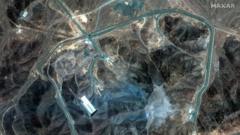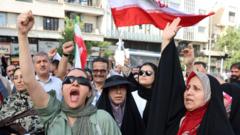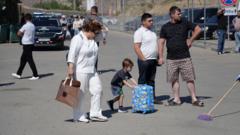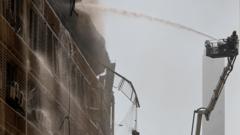Iran's political landscape is shifting as officials grapple with the aftermath of airstrikes, while President Masoud Pezeshkian takes a more public role.
Iran's Government Faces National Humiliation Following US Attacks

Iran's Government Faces National Humiliation Following US Attacks
Amidst internal divisions, Iranian officials maintain a façade of normalcy despite the fallout from American military strikes on nuclear sites.
Iran is grappling with the repercussions of recent American airstrikes targeting its three primary nuclear facilities, revealing a sentiment of defeat and humiliation among officials. While the government attempts to present an image of normalcy, the stark reality displays significant damage, especially at the Fordo nuclear site, as evidenced by satellite imagery depicting extensive destruction.
Hamid Hosseini, a prominent member of Iran's Chamber of Commerce energy committee, voiced a sobering truth during a phone interview from Tehran, urging that Iran no longer holds military or technological advantages and advocating for a reevaluation of its readiness for prolonged conflict. “We must prioritize national interests,” he stated. “We should not be in a state of war indefinitely.”
On Sunday, the Iranian President, Masoud Pezeshkian, engaged in public appearances across Tehran, notably visiting an anti-American protest and meeting with victims of the airstrikes in a hospital. As a trained heart surgeon and former health minister, Pezeshkian acknowledged the efforts of medical personnel amid the ongoing turmoil. In a show of solidarity, he shared on social media, “We will walk this path together. We will protect Iran and demonstrate to the world that our great people are unbeatable.”
Despite the façade of resilience projected by the government, the underlying tension and discontent within the Iranian leadership cast doubt on the stability of the national stance in these testing times.























